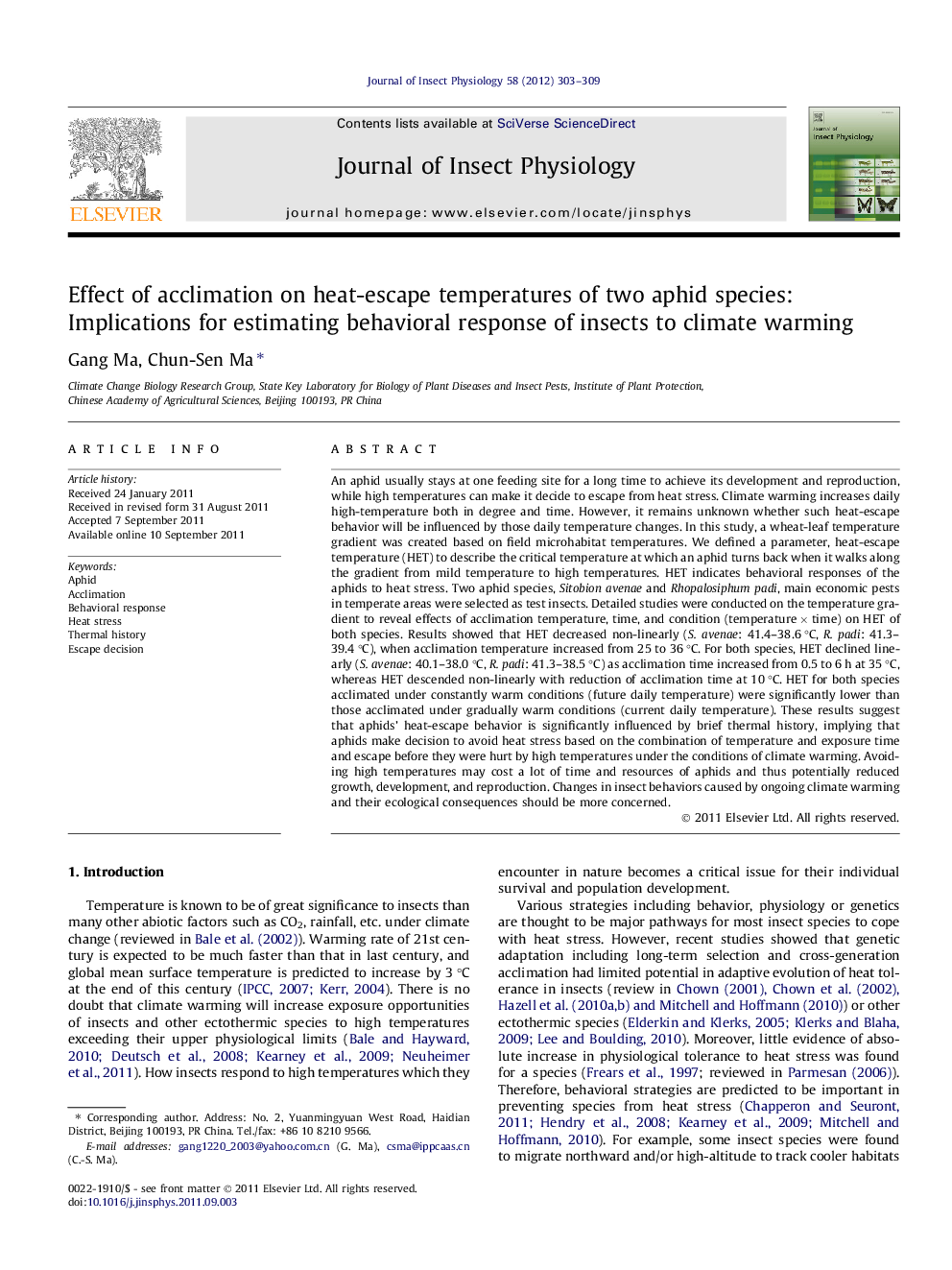| Article ID | Journal | Published Year | Pages | File Type |
|---|---|---|---|---|
| 2840660 | Journal of Insect Physiology | 2012 | 7 Pages |
An aphid usually stays at one feeding site for a long time to achieve its development and reproduction, while high temperatures can make it decide to escape from heat stress. Climate warming increases daily high-temperature both in degree and time. However, it remains unknown whether such heat-escape behavior will be influenced by those daily temperature changes. In this study, a wheat-leaf temperature gradient was created based on field microhabitat temperatures. We defined a parameter, heat-escape temperature (HET) to describe the critical temperature at which an aphid turns back when it walks along the gradient from mild temperature to high temperatures. HET indicates behavioral responses of the aphids to heat stress. Two aphid species, Sitobion avenae and Rhopalosiphum padi, main economic pests in temperate areas were selected as test insects. Detailed studies were conducted on the temperature gradient to reveal effects of acclimation temperature, time, and condition (temperature × time) on HET of both species. Results showed that HET decreased non-linearly (S. avenae: 41.4–38.6 °C, R. padi: 41.3–39.4 °C), when acclimation temperature increased from 25 to 36 °C. For both species, HET declined linearly (S. avenae: 40.1–38.0 °C, R. padi: 41.3–38.5 °C) as acclimation time increased from 0.5 to 6 h at 35 °C, whereas HET descended non-linearly with reduction of acclimation time at 10 °C. HET for both species acclimated under constantly warm conditions (future daily temperature) were significantly lower than those acclimated under gradually warm conditions (current daily temperature). These results suggest that aphids’ heat-escape behavior is significantly influenced by brief thermal history, implying that aphids make decision to avoid heat stress based on the combination of temperature and exposure time and escape before they were hurt by high temperatures under the conditions of climate warming. Avoiding high temperatures may cost a lot of time and resources of aphids and thus potentially reduced growth, development, and reproduction. Changes in insect behaviors caused by ongoing climate warming and their ecological consequences should be more concerned.
Graphical abstractFigure optionsDownload full-size imageDownload as PowerPoint slideHighlights► We use heat-escape temperature (HET) to describe aphids’ heat-escape behavior. ► HET and acclimation temperature show a negative correlation. ► HET decreases with the time of high-temperature acclimation increase. ► Constantly warm that reflects future daily weather condition lowers the aphids’ HET. ► Such behavior is affected by short-term thermal history which the aphids experience.
